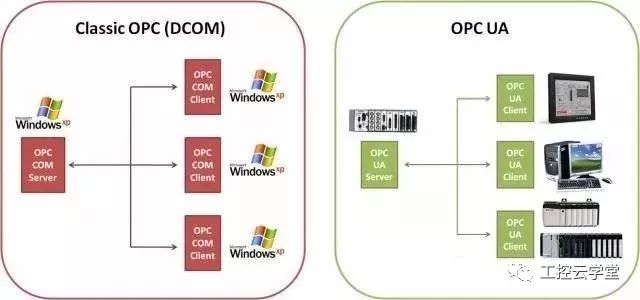Ten Reasons to Use OPC UA

Guide:
OPC UA
The OPC Unified Architecture (OPC UA) is a modern, secure, and vendor-independent communication standard developed by the OPC Foundation. It enables seamless data exchange between manufacturing systems and enterprise applications such as ERP or production planning. By leveraging OPC UA, critical information can be accessed by authorized users and applications anytime, anywhere, ensuring real-time visibility across the entire industrial ecosystem.
Unlike traditional OPC technologies, which were limited by Microsoft's COM/DCOM architecture, OPC UA is platform-independent, supports multiple programming languages, and runs on various operating systems. This makes it ideal for integrating diverse automation devices and IT systems without vendor lock-in. Additionally, OPC UA enhances scalability, high availability, and internet-based services, making it a powerful tool for modern industrial communication.
One of the key advantages of OPC UA is its shift from DCOM to a service-oriented architecture (SOA), allowing more devices to connect and communicate efficiently. Today, OPC UA serves as a crucial bridge between enterprise computers and embedded automation components, regardless of the underlying operating system—whether Windows, UNIX, or Linux.
Below are ten compelling reasons why OPC UA is becoming the preferred choice in industrial automation:
1. Discontinuation of COM/DCOM
Traditional OPC relies on Microsoft’s COM/DCOM technology, which has been phased out with the rise of .NET. While DCOM was once widely used, its future is uncertain, prompting the need for a more robust and forward-looking solution like OPC UA.
2. Limitations of DCOM
Although DCOM offered powerful features like remote access and security, configuring it properly was complex and often led to insecure setups. Many users opted for weak permissions, leaving systems vulnerable to attacks. OPC UA eliminates these issues with built-in security and easier configuration.
3. OPC Communication Through Firewalls
DCOM required multiple open ports to function, creating significant security risks. OPC UA uses tunneling techniques that allow secure communication through firewalls without compromising system integrity.
4. Support for Non-Windows Platforms
While DCOM was tightly integrated with Windows, it was not supported on other operating systems like Linux or Unix. OPC UA breaks this barrier, enabling seamless integration across different platforms and embedded systems.
5. Cross-Platform Communication via Web Services
With the introduction of OPC XML-DA, the foundation explored web-based communication. While it offered cross-platform compatibility, performance lagged behind DCOM. OPC UA improves on this by combining web services with high-speed data transfer, meeting modern automation needs.
6. Unified Data Model
Traditional OPC had separate servers for data access, alarms, and historical data. OPC UA unifies these into a single model, reducing complexity and improving efficiency for both developers and end-users.
7. Support for Complex Data Structures
OPC UA allows for the description of complex data structures, which is essential for modern industrial devices. While many legacy systems lack this capability, OPC UA ensures accurate data representation and better device integration.
8. Reliable Data Transmission
In mission-critical environments, data loss is unacceptable. OPC UA provides mechanisms like data caching, redundancy, and automatic reconnection to ensure continuous and reliable communication, even in unstable network conditions.
9. Enhanced Security Features
As industrial networks become more connected, security is paramount. OPC UA includes advanced security protocols that protect against unauthorized access, ensuring compliance with modern IT standards and reducing cyber threats.
10. Support for New Command Calls
Beyond simple data reading and writing, OPC UA enables execution of commands such as starting a motor or downloading files. This functionality is critical in many industrial applications and is fully supported in OPC UA but not in traditional OPC implementations.
In conclusion, OPC UA offers a secure, scalable, and flexible solution for modern industrial communication. Its ability to integrate across platforms, support complex data, and provide robust security makes it an essential technology for the future of automation and digital transformation.
Pattern Braided Sleeve,Wire Sleeving,Expandable Braided Sleeving,Cable Wrap Sleeve
Shenzhen Huiyunhai Tech.Co., Ltd. , https://www.cablesleevefactory.com